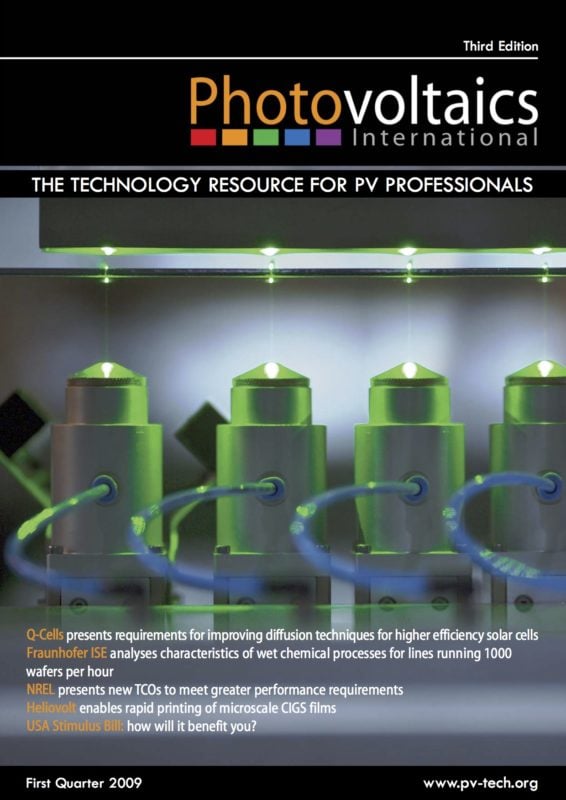By Louay Eldada, CTO, HelioVolt Corp.
In recent years, a new generation of solar electric products has emerged from the lab into the global market: thin-film technologies that employ approximately 1% of the active, expensive photovoltaic material used by standard crystalline-silicon cells. Through a combination of cost advantages and new product applications, CdTe, a-Si and CIGS thin-film PV have the potential to foster a paradigm shift toward distributed electricity generation at cost parity with other forms of energy. But until recently, the photoactive compound has not had a reliable, rapid manufacturing process that could scale effectively to multi-megawatt-scale volume production and provide significant amounts of electricity at the point of use. This article describes a novel process, known as field-assisted simultaneous synthesis and transfer (FASST) printing, a manufacturing approach that enables the rapid printing of microscale CIGS films with p- and n-type nanodomains that are critical for achieving the highest efficiencies possible.


